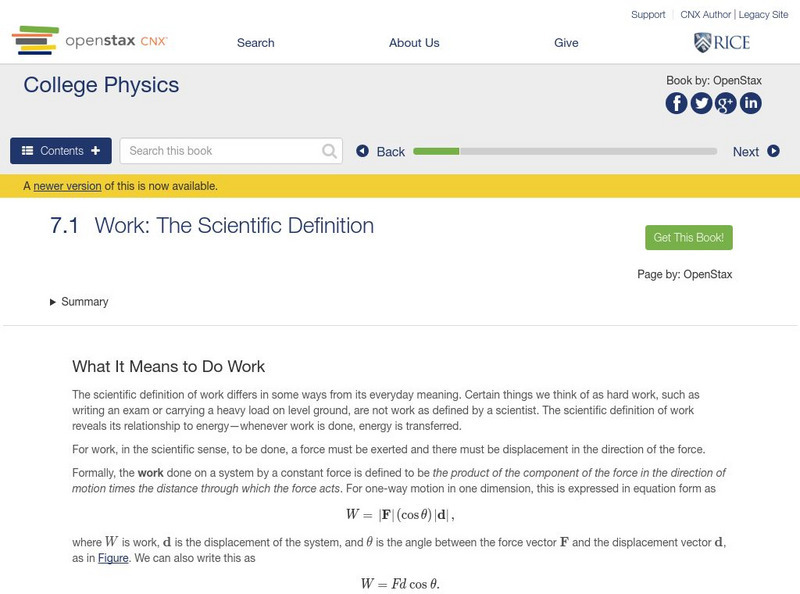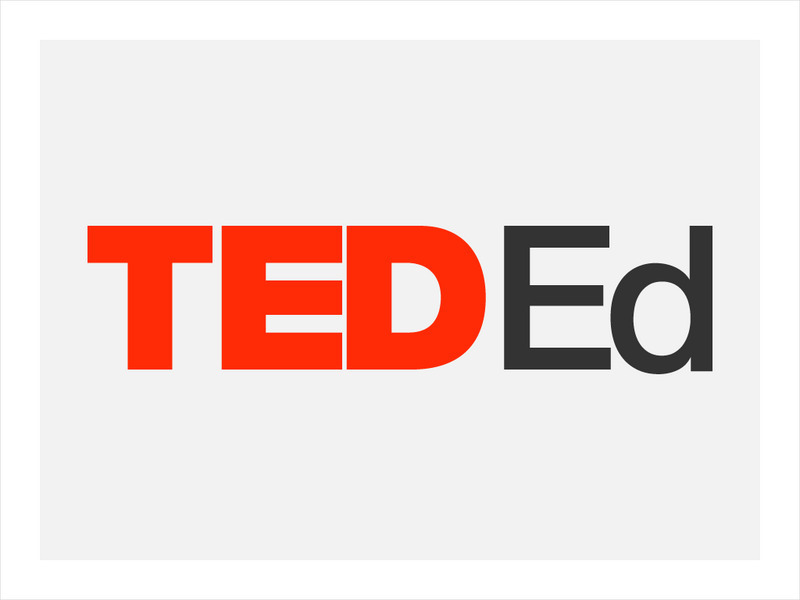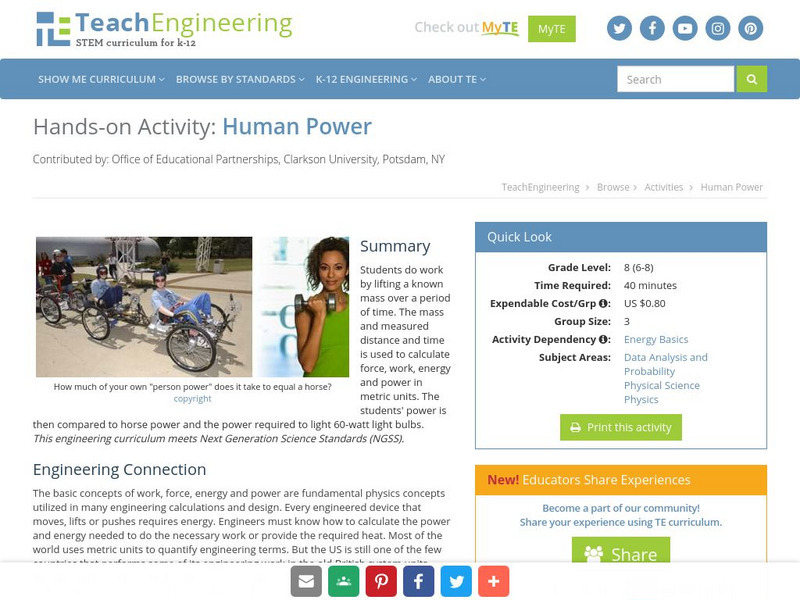OpenStax
Open Stax: Work: The Scientific Definition
In the following interactive students will begin to explain how an object must be displaced for a force on it to do work. They will also explain how relative directions of force and displacement determine whether the work done is...
Sophia Learning
Sophia: Work: Lesson 2
This lesson will explain the concept of work, and show that it can be calculated using force and distance.
TED Talks
Ted: Ted Ed: How Does Work, Work?
In this video, Peter Bohacek explains the interplay between work and power and how it can be seen in the functioning of a clock. [4:31] Followed by a short quiz and a list of additional resources to explore.
University of California
University of California Los Angeles: Force, Work and Power
Describes the definition and relationships between force, work and power. Includes nice drawings to increase conceptual understanding.
National High Magnetic Field Laboratory
Magnet Academy: James Joule
James Prescott Joule experimented with engines, electricity and heat throughout his life. Joule's findings resulted in his development of the mechanical theory of heat and Joule's law, which quantitatively describes the rate at which...
Sophia Learning
Sophia: Sciences: Work
This resource gives the definition of work and explains how work is related to force and distance. Also explains the units used to measure work and how it is calculated.
TeachEngineering
Teach Engineering: Power, Work and the Waterwheel
Waterwheels are devices that generate power and do work. Students construct a waterwheel using two-liter bottles, dowel rods and index cards, and calculate the power created and work done by them.
TeachEngineering
Teach Engineering: Human Power
Students do work by lifting a known mass over a period of time. The mass and measured distance and time is used to calculate force, work, energy and power in metric units. The students' power is then compared to horse power and the power...
Famous Scientists
Famous Scientists: William Thomson
Learn about William Thompson's important work in the mathematical analysis of electricity and formulation of the first and second laws of thermodynamics, and did much to unify the emerging discipline of physics in its modern form.








